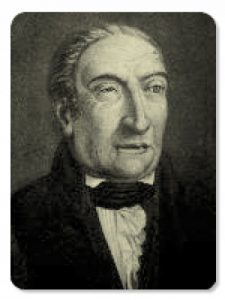
Botanist. Son of a noble landowner family in Altafulla, of the ancestral home of Ardenya, he was also known as Martí of Ardenya. Although he studied for two years at the University of Cervera, between 14 and 16 years of age, historians agree that he was an autodidact. Passionate for botany and chemistry, his father's liberalism and the stability of the family's finances allowed him to devote time to his studies.
He began his scientific incursions in botany and gradually began studying plant chemistry. He would repeat the experiments of the great masters and, if he found errors, he would report them, thus becoming a top-level experimental scientist. As Josep Iglésies wrote, "he was, if you wish, a researcher who felt driven by an insatiable desire to help advance science." In 1787 he presented, before the recently created Royal Academy of Natural Sciences and Arts of Barcelona, the results of his investigations on ‘vital air' (as oxygen was known at the time) in plants. The conclusion of the report showed that the main food source of plants was carbonaceous matter. A couple of years later, again at the Royal Academy, he presented his results on the quantity of vital air that is found in atmospheric air and thus corrected the results published by Lavoisier and adopted by all the great chemists. This report on the volumetric composition of air was published in Madrid on 1795, but also in Paris (1801), London (1801), and Berlin (1805). Among this group of experiments that corrected or denied previous statements, his workExperimentos y observaciones sobre los sexos y fecundación de las plantas(Experiments and observations on the sex and fertilization of plants), presented in 1791 and which refuted the writings by Lazzaro Spallanzani on this topic, stands out. Among other things, Spallanzani had stated that hemp could reproduce without fertilization, which Martí denied with rigorously documented experiments.
His contributions were not only in the form of publications and reports, he also applied this new knowledge to the agriculture of the land where he lived. This is the case, for example, of the procedures to artificially fertilize carob. Faced with an absence of harvest, Martí realized that the problem laid in the sex of the trees: all female. He planted a few male specimens between the already existing ones and from that year onwards they produced the expected hanging pods.
The obsession that became the great-unpublished-work of Martí's maturity was his research on fermentation and putrefaction. After careful analyses that he carried out for years, he conducted tests on the spontaneous germination of plants that, at the time, had no yet been refuted by Pasteur's discoveries. But Martí's observations not only discussed science but, from his religious point of view, also spoke about faith. As expressed by Josep Iglésies "in the atmosphere of the early nineteenth century, Martí thought he was moving away dogma and was afraid in doing so." And in the words of Martí himself: "Can I, without violating Christian faith, suspect that between the creation of heaven and earth, or the four elements that are described in the first verses of Genesis and the production of plants and animals, many thousands of years transpired? (…) Does faith oppose to believe that the creation of plants and animals was the work of the virtue that God gave to the four elements and that this creation took many, many years?" These doubts together with an exaggerated humility were the reason he never published any of his results.
Among Martí's memorable achievements is having formed part of the group of scientists who determined the length of the meter. In both in the first (1792) and the second (1803) voyages that the group had to make to Tarragona, Martí was a guide and adviser.
But the splendor of his research and scientific collaborations was cut short in 1811, when Napoleon's armies occupied Tarragona in a bloody siege that lasted fifty-six days. Martí decided to stay in the city, was wounded and took refuge in the cathedral, with thousands of others, until he was taken prisoner. When he was finally released, he returned to his home to find that his laboratory, his notes and his library had been destroyed. It was the end of an era. When the French withdrew from Tarragona, Martí was 64 years old. Nine years later his wife died and his eyesight increasingly deteriorated. He needed someone to read to him in order to keep up with scientific discoveries. Up until the last moments of his life he kept informed on his interests, thanks to the careful reading aloud that they did for him of the journal Anales de Química y Física. He died on 20 November 1832 in Tarragona, in the family home on Santa Anna street.
Main works
- Memoria sobre los varios métodos de medir la cantidad de aire vital de la atmósfera (Martí i Franquès, 1790)
- Experimentos y observaciones sobre los sexos y fecundación de las plantas(Martí i Franquès, 1791)
For more information
- Camarasa, J. M.; Català, J. I. (2007). Els nostres naturalistes, vol. 1. València: Universitat de València i Mètode.
- Iglésies, J. (1965). Un moment estel·lar e la ciència a Catalunya en el segle XVIII. Barcelona: Rafael Dalmau.
